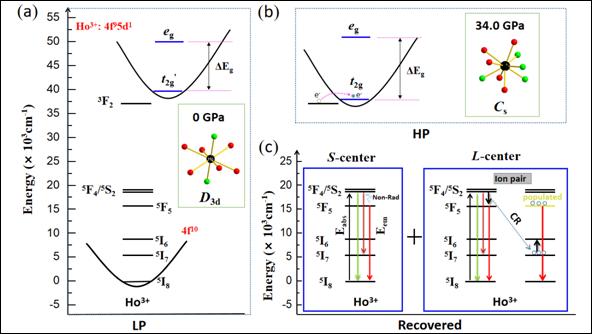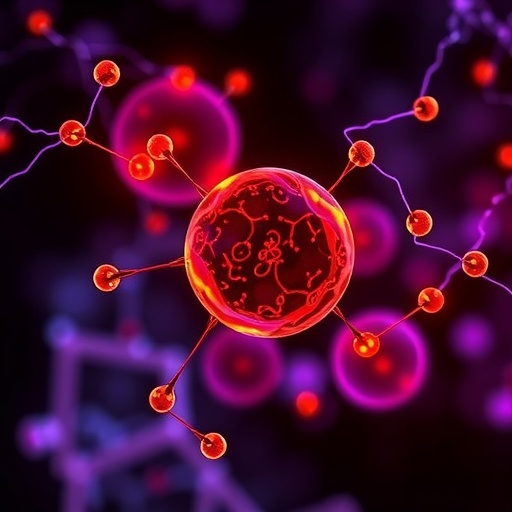
Credit: Yongsheng Zhao
Photoluminescence (PL) is light emission from a substance after the absorption of photons stimulated by temperature, electricity, pressure, or chemistry doping. An international team of scientists led by Dr. Wenge Yang from Center for High Pressure Science &Technology Advanced Research (HPSTAR) presents a strong tricolor PL achieved in non-PL pyrochlore Ho2Sn2O7 through high pressure treatment. Interestingly the PL can be much enhanced after pressure release and recovered to ambient conditions. Their study is published in the recent issue of Physical Review Letters.
Photoluminescence materials are widely used in the fields of biochemistry and medicine, which can be used as lasers, anti-counterfeiting labels and sensors. Rare earth pyrochlore has attracted extensive attention for its potential optical properties, stable structure and chemical properties. The luminescence character of pyrochlore mainly comes from rare earth ions. It has the potential of application in extreme conditions because the emission of pyrochlore is insensitive to the external environment.
“Pressure has been widely used as a unique tool to tune the PL properties of materials, such as hybride perovskites”, said Dr. Wenge Yang. “So what will happen to apply pressure to the non-PL materials like the structural stable pyrochlore Ho2Sn2O7, a typical materials used in nuclear reactor or waste immobilization.”
When Ho2Sn2O7 is compressed above ~31 GPa, the non-PL Ho2Sn2O7 shows tricolor PL, spanning from green to red to near infrared range with green PL dominate. More interesting, the tricoloar PL is not only retained but also largely enhanced (two times enhanced in green and near infrared PL and four times in red PL) and with red PL dominant after pressure quench. As reference, the recovered Ho2Sn2O7 with pressure treated below 31 GPa does not show any PL at all.
“Actually pressure has induced PL in a lot of materials, however the pressure-induced PL in most materials will disappear after pressure release,” said Dr. Yongsheng Zhao, the leading author of the study. “The tricolor PL in Ho2Sn2O7 can be recovered to ambient condition and largely enhancement with pressure release is really exciting behavior as this materials might have potential application for the pressure threshold sensor on the extreme condition history.”
Then what makes the colorful PL in the compressed Ho2Sn2O7?
To further probe the unique PL induced in Ho2Sn2O7, the team carried out X-ray diffraction and X-ray absorption measurements to track the structures during compression in the sample. The X-ray diffractions show that at the pressure where PL emerged, the sample also went through a crystal structure transformation. And upon decompression, the material changed to amorphous state.
“Our further analysis on crystal and electronic structure revealed that the centrosymmetric site symmetry of Ho3+ change to non-centrosymmetric during structural change at high pressure,” explained Dr. Yongsheng Zhao. “This enhanced the hybridization of Ho3+ electron orbitals and thus brings in the emerging of tricolor PL. And the enhanced PL in amorphous state comes from the energy-exchange between the two Ho3+, which stimulates one more emission center in the quenched sample.”
“Our study highlights the pressure effect on the local ion site symmetry, which largely turns and enables the new emission center from traditionally less than 1% doping level of RE ion materials to a regular site RE (18% in this case). The new physics principle could be potentially used for many other types of system,” added Dr. Yang.
###
More information: “Tricolor Ho3+ Photoluminescence Enhancement from Site Symmetry Breakdown in Pyrochlore Ho2Sn2O7 after Pressure Treatment”, Yongsheng Zhao et al., Phys. Rev. Lett. 125, 245701(2020).
Media Contact
Haini Dong
[email protected]
Original Source
http://hpstar.
Related Journal Article
http://dx.




